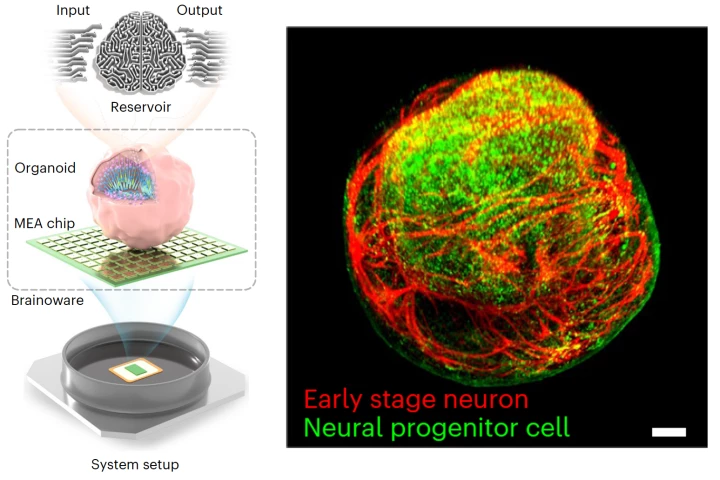Biocomputers
Where biology meets electronics. Biocomputers use human brain cells, typically grown onto a silicon chip with electrodes all through them, acting as a learning-capable processor. Remarkable work has already been done in this area – for example, the DishBrain project, which learned to play Pong within a few hours. Living brain cells may eventually power computers capable of learning much faster than today's neural processors, while consuming vastly less energy.
-
For the first time, Cortical Labs' mini-brain system has shown how its breakthrough biological computer system can, in response to drug intervention, alter activity and improve performance. It's a huge milestone for synthetic biological intelligence.
-
A non-invasive brain-computer interface that produces real-time EEG feedback on neural activity while the user plays a video-game, and then assesses data with AI, is helping clinicians more accurately diagnose attention-deficit/hyperactivity disorder.
-
Living brain cells wired into organoid-on-a-chip biocomputers can now learn to drive robots, thanks to an open-source intelligent interaction system called MetaBOC. This remarkable project aims to re-home human brain cells in artificial bodies.
-
Current AI training methods burn colossal amounts of energy to learn, but the human brain sips just 20 W. Swiss startup FinalSpark is now selling access to cyborg biocomputers, running up to four living human brain organoids wired into silicon chips.
-
Scientists have grown a tiny brain-like organoid out of human stem cells, hooked it up to a computer, and demonstrated its potential as a kind of organic machine learning chip, showing it can quickly pick up speech recognition and math predictions.
-
When you take 800,000 human brain cells, wire them into a biological hybrid computer chip, and demonstrate that it can learn faster than neural networks, people have questions. We speak to Dr. Brett Kagan, Chief Scientific Officer at Cortical Labs.
-
Last year, Monash University scientists created the "DishBrain" – a semi-biological computer chip with some 800,000 human and mouse brain cells lab-grown into its electrodes. Demonstrating something like sentience, it learned to play Pong within five minutes.
-
Scientists have demonstrated that clusters of brain cells in a lab dish can be taught to play Pong in an approximation of sentience. This is the first time that these cells have performed goal-directed tasks, opening the door for better brain models.







